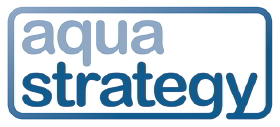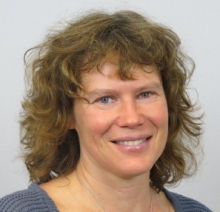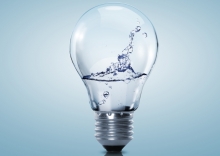- Research
Issue:
A research project carried out by IVL Swedish Environmental Research Institute in partnership with Xylem Inc. has looked at how best to combine various leading edge technologies for different water reuse applications, using a framework featuring life cycle cost analysis to identify the most sustainable options.
The project, called ReUse, was based around a pilot plant treating wastewater from Stockholm’s main treatment plant, Hendriksdal, drawing in information from full-scale plants for environmental and economic assessments. The pilot used a single advanced secondary treatment process, known as ICEAS, and combined this with technologies such as activated carbon, ultrafiltration, and use of a biological active filter. It investigated use of the technologies in three different plant sizes and for reuse in agricultural, industrial and groundwater replenishment applications.
Treatment to achieve a water quality suitable for wastewater reuse is typically viewed as adding cost, with additional energy costs associated with this treatment increasing the environmental impact of the reuse. In the final project report, released earlier this year, the researchers reported that increasing costs become less significant with increasing plant size. Also, treatment to a higher quality does not automatically imply an increase in environmental impacts. ‘The project indicates that the total environmental impact of the optimized ReUse systems can be lower than for baseline scenarios representing traditional treatment,’ the researchers state.
The project studied eight reuse solutions coupled with Xylem’s Sanitaire ICEAS (intermittent cycle extended aeration system) secondary treatment reactor: disk filters, ozone treatment, granular activated carbon, rapid gravity sand filters, ultrafiltration, biological active filters (BAF), UV disinfection, and chlorination.
Parameters assessed ranged from traditional substances such as nutrients to emerging pharmaceutical substances of concern to wider factors such as nitrous oxide emissions relevant to sustainability. The study’s investigation of operating parameters for use of ozonation and a BAF process after the secondary step and filtration for carbon and micropollutant removal provided information for the development of Xylem’s Oxelia combined treatment process.
The project showed that various technology combinations could meet water quality requirements for reuse in agriculture, industry and for groundwater replenishment. The life cycle analysis approach used in the project also looked at how the processes could be combined optimally in an overall treatment system. Use of an optimization strategy allowed capital and operating cost savings to be identified in different process combinations, by reducing the size of the secondary plant or reducing power use by changing pump positions, for example. Assessment of nitrous oxide also showed how energy savings from achieving a lower water quality may be outweighed by a higher greenhouse gas impact of nitrous oxide emissions.
The report gives information for each application about which treatment system had the lowest environmental impact and the best effluent quality. Life cycle analysis covered plants sized at 20,000, 100,000, and 500,000 population equivalents, and both capital and operating costs were assessed. The study showed that the tertiary treatment steps needed to meet the reuse quality standards only contributed by a few percent to the overall life cycle cost of a treatment combination. ‘The evaluation showed that costs for producing water for different reuse applications are lower than reported costs for existing conventional sewage treatment plants in Sweden’, the report states.
The report sets out details of further areas of study, especially to optimise the ICEAS treatment process for nitrogen removal targeting non-potable water reuse applications worldwide and the development of an empirical method to predict the performance.
‘The project concludes that sustainable treatment systems for wastewater reuse require aggregation of environmental impact, cost and achieved water quality evaluations,’ the report finds. ‘Results provide a clear indication that wastewater reuse for various reuse purposes is feasible without increasing the total environmental impact and without increase in costs and at the same time fulfilling regulation targets.’
More information:
Reuse of treated wastewater for non-potable use (ReUse)
IVL Swedish Environmental Research Institute, 2016, report B2219
Available at: www.ivl.se/webdav/files/Rapporter/B2219.pdf
Keywords:
- Sweden, IVL, Xylem, water reuse






